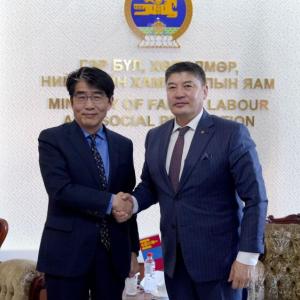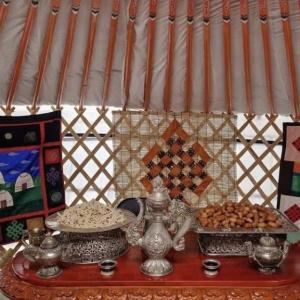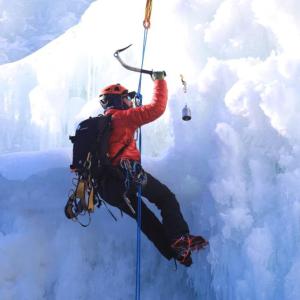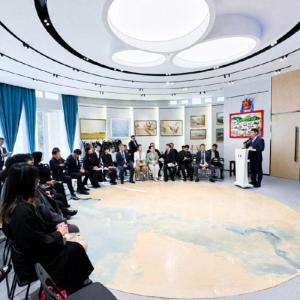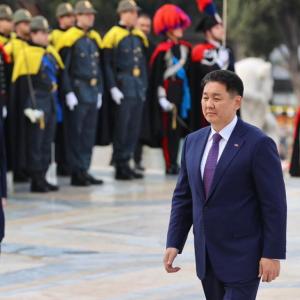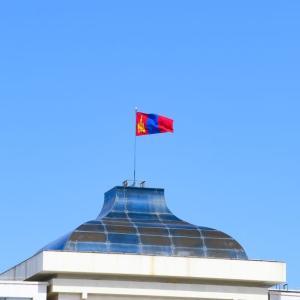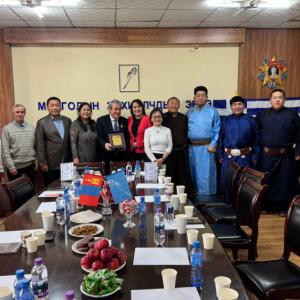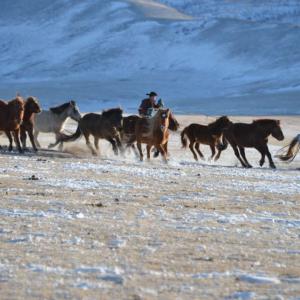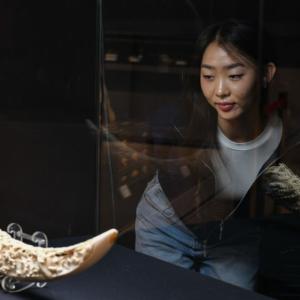Khustai Mountain – home to the largest number of Takhi
The Mongol MessengerSince the Przewalski's horse or Takhi – one time extinct and endangered in the wild was reintroduced to its native habitat in the Khustai Mountain National Park, the population of Takhi in the area was estimated at over 340 as of December 2015. Some names of the places in Mongolia, such as ‘Yellow Mountain Ranges of Takhi’ and ‘Steppe of Takhi’ are proof of an abundance of Takhi ‘the wild horse’ in Mongolia.
However, during the late 19th century, the wild horses drew attention of foreign tourists in the country and a plenty of them were hunted, killed or captured for zoological collections. This led to a decline in their population and in the 1930-1940s; the subspecies of wild horse were designated in the Red Book of Endangered Animals as an extinct animal.

Reintroduction of the Takhi started in June 1992 with three rounds of transport of Takhi from European countries. A total of 87 Takhis was released into several different regions of Mongolia to result in a continuous increase in their population number up until today. As a result of reintroductions to the Khustai Mountain ranges as well as the Steppe of Takhi in Gobi-Altai aimag and the Khom Steppe in Zavkhan aimag, the number of Takhi population reached over 500m able to sustain and survive on their own.
Reintroducing them in three different regions is to prevent from inbreeding said B.Manlai, guide of the Takhi Reintroduction Center. There are 23 biologists and environmental conservationists in Khustai. Reasons of the decrease to the Takhi population include dzud - severe winter season, too much snow or wild horse stallions fight each other over a leader position in the group. People who attempt to save the animals would have a great risk of being attacked and killed, so that there are sometimes no other way to leave them alone. Even, one stallion of a Mongolian horse which approached to a flock of Takhi was luckily survived their attacks and never again appeared in the areas surrounding their habitat land.
The Takhi horse never hurt their offspring and descendants of one stallion never form a herd with each other in anyway. It is nurtured in their flock until they reach two years old and then the three year old-Takhis are expelled from the flock and strive to create a their own independent crowd. Sometime the weaker ones have to die on their own without mating with mares. The stallion takhi is the cruelest ‘step-father’ among all wild horses. If the female horse they brought happens to be already pregnant, they kill the foal immediately after it is born. The Takhi foals are rarely survive under human cares and it dies soon after it drinks milk or tea due to bowel disease.
Clarifying on some many wild horses with a foreign name, B.Manlai said people, especially foreign tourists, name the newborn Takhis foals after their own name for USD 100.
Jan Bouman, founder of the Foundation for the Preservation and Protection of the Przewalski horse in Rotterdam, the Netherlands, has made a valuable contribution to the works of Takhi reintroduction in the Khustai. Appraising his endeavors and hard labors put into the reintroduction, nature preservation of the Khustai National Park, enhancing management system and facilities of the administrative office of the Park, and a wide range of ecological researches in Mongolia, the President of Mongolia has awarded him a ‘Nairamdal’ Order in 2012 and an Order of Polar Star as well. Jan Bouman, with her wife Inge Bouman has done lots of works towards decreasing inbreeding in the Takhi preservation zoos and Takhi reintroduction.
Apart from studying the adaptation process and biological and ecological characters of Takhis being reintroduced into the region, the Khustai center performs a broad range of research on the ecosystem jointly with international academic institutes and universities. For instance, a research and academic center that operates using solar energy. Its two-story building with a solar-panel roof has two halls designed for organizing international meetings, offices for research, workshops and tourism departments and an indoor parking for 5-6 vehicles. Every year, young international scholars and students, including from UK, France, Japan, Germany, Belgium and Italy arrive in Mongolia and attend research works at the center. The research and academic center aims to become an international center for field research for ecosystems.
Abundant wildlife species in the Khustai National Park are increasing year by year and there are 55 mammals are recorded, including red deer, roe deer, antelope, argali (wild Mongolian sheep), wild boar, grey wolf, lynx, fox, wildcat, badger, marmot and many others. As of last year, the population of argali, which has rarely seen before, reached over 40 and some one thousand deer and more than 500 antelopes were counted. Also, there are some 4900 vascular plant species and 223 species of bird in the Khustai Park.
The Khustai National Park is located in roughly 100 km west from Ulaanbaatar city. In pursuance to the Parliament decision, 50 ha land of the Khustai Mountain range was included in a land with state protected class in 1993 and became a National Park in 998, upgrading its classification. The Park was registered in the UNESCO the Man and the Biosphere program.
Not only the Khustai National Park is for wildlife, it has been always a well-known of its rich archaeological and cultural sites. Its Ungot grave Complexs applies to Turkic Empire resided in the land of Mongolia during 552-742. There are also over 60 stones with manlike features found in the Central Asia. Stones of sitting tiger and sheep are can be found in the Park. The tiger stone is believed to be created to become a symbol of fearlessness and the sheep stone is for sacrifice. Over 160 rectangular tombs were found from some valleys of Khustai Mountains. These are believed to be originated from the tribes of Bronze Age during the III-II centuries BC. In addition, remaining of over 19 large burial places and statue stone are in the region.
Our guide Manlai says, Mongolia is home to around 800 deer stones or 90 percent of all deer stones found throughout the world. Shapes of deer, eagles, archery man and wolves chasing after ibex carved and sculpted on those wide and flat boards are worn down due to hundreds’ of years of rains, snows, storms and winds. The statues and stones were saved after using special hardening formulas on them, parts of which were used to be crumbled into pieces with a touch of a hand.
The article was featured in the Mongolia Today's issue No. 3 for Jul-September 2016.
 Ulaanbaatar
Ulaanbaatar






